Have you ever considered adding ornamental fish to your aquarium? Do you have any species in mind? The Veiltail’s popularity keeps growing, and if you’re curious, you’ve come to the right place for all the answers you seek.

Discover the Graceful World of Veiltail Goldfish
Enthusiasts looking to spice up their aquarium hobby love this species for more than its physical beauty. Its graceful swimming style guarantees to mesmerize viewers, and it doesn’t need fussy care to survive.
Let’s start from the beginning.
History and Origin of Veiltail Goldfish
Veiltail Goldfish’s history dates back to ancient China more than 1,000 years ago when breeders explored selective breeding. Before becoming ornamental goldfish, Veiltails bred from wild carp were food for the Chinese.
After selective breeding during the Song Dynasty, the Veiltail became an East Asian aquarium fish. Its beautiful physical characteristics made it the top pick of most goldfish varieties.
The Chinese associate the Veiltail Goldfish with positivity and auspicious omens, such as good luck, wealth, and prosperity, so they’re often found in high-profile spaces.
Although it’s been over a thousand years since the first discovery of these elegant water dwellers, the Veiltail Goldfish has become a staple in ornamental East Asian aquariums. Here’s a closer look at their unforgettable physical appearance.
Physical Characteristics of Veiltail Goldfish
When you see a Veiltail Goldfish, you’ll know it because of its striking physical appearance. But if you’ve never seen one, here’s what to look out for on your next scout:
Veiltail Morphology
The Veiltail Goldfish has a streamlined egg-shaped body. Unlike most goldfish tail types, which are stocky, short, and uninteresting in style, the Veiltail has a lightweight double-fin. Its shape spreads into a veil, earning the fish its unique name.
If you give them the right conditions, your Veiltail Goldfish will grow up to 8 inches long. This Veiltail morphology is why the fish swims elegantly like a dancer.
What’s the Veiltail Goldfish’s Color?

Although the Veiltail Goldfish comes in many colors, the red/orange and white mix is the most popular.

Other Veiltail colors include pure black and calico patterns, which are a mix of all the other tones.
Once you’ve chosen your Veiltail Goldfish, it’s time to select their habitat.
Habitat and Tank Requirements

When keeping goldfish in a tank or pond, it’s best to simulate their natural habitat conditions. This will condition the fish into believing they’re home and allow them to grow as they would if left in their original homes.
Firstly, I’ll point you to the proper Veiltail tank setup. Then, I’ll highlight the tank requirements, including water parameters, aquarium size, and decorations.
Veiltail Habitat
The natural Veiltail Goldfish habitat from the origin story is East Asian waters. So, use that as your blueprint when designing the aquarium setup for your goldfish.
Because of their delicate double-fins, it’s best to use soft and smooth substrate and decor. Choose sand and fine gravel over grass or other sharp decor that can bruise your Veiltail Goldfish’s fin. For decor, I recommend tiny rocks and driftwood without sharp edges.
And if you use plants, pick The 8 Best Live Plants for Goldfish Aquariums, there are indeed live plants that can thrive in a goldfish habitat.
You may want to explore different tank shapes and designs, but consider your fish’s morphology before choosing a tank.
Veiltail Tank Requirements
- Tank Shape: Use a rectangular tank laying horizontally for your Veiltail Goldfish as it fits its body better than a tall one. Remember that fish mostly swim horizontally based on their shape.
- Tank Size: A single Veiltail Goldfish needs a tank that holds at least 20 gallons of water for comfortable movement. Add 10 gallons for every extra Veiltail Goldfish you add to the tank. Although this species’ body is only 6 – 8 inches long, the long, flowing double-fins need ample space to move without hurting.
- Water Parameters for Veiltail: Keep the water temperature inside the tank at 65°F – 72°F to mimic the coldness of the East Asian seas. Ensure the pH level stays between 7 – 8.4 and the water hardiness is 5 – 20 dGH.
- Oxygenation: Your fish also need oxygen to survive, so add an air stone or air pump to regulate the oxygen levels inside the aquarium. Additional aeration is especially important for large aquariums with more fish, even if it’s not only the Veiltail species.
- Lighting: maintain a healthy photoperiod in your tank, but don’t leave it on for more than 8 – 10 hours. Otherwise, you’ll encourage algae growth and stress your Veiltail Goldfish. Photoperiods mimic sunrise and sunset, giving your pets a sense of daily changes. That way, they’ll know when to rest and when to move around.
- Water Quality: Change your aquarium water weekly by reducing 20 to 30% off the top. This regulates the water’s nutrients and keeps it at a healthy level for your pets to thrive.
- Filtration: Maintaining healthy water quality for your Veiltail Goldfish starts with a good filtration system to reduce ammonia waste. That’s because, despite their elegant look and swimming, Veiltail Goldfish are messy eaters!
Without maintaining proper water parameters, the tank’s water quality can degrade, which can cause a wide range of issues from cloudy aquarium water to illness and mass fish die off.
Diet and Nutrition
Feeding the Veiltail Goldfish isn’t a chore despite their messy eating habit. But you can’t just wing it and hope they turn out healthy and fine.
First, you must study the nutritional needs of Veiltail Goldfish, which may differ from the regular goldfish diet. Then, a workable feeding schedule should be created to keep them in check and prevent health hazards.
Nutritional Needs of Veiltail Goldfish
Veiltail Goldfish need a balanced diet with diverse the food nutrients for healthy growth. They get protein, essential vitamins, and minerals from specially-made commercial flakes and pellets. But rely on more than just these staples.
Mix the flakes and pellets with live food like bloodworms, mosquito larvae, and daphnia for more protein and carbohydrates. Veiltail Goldfish also eat blanched vegetables such as spinach and peas for fiber and fruits like grapes and oranges.
Warning: Be careful when feeding your Veiltail Goldfish with citrus fruits because of the high sugar content. Use them as treats and serve them in tiny pieces.
Veiltail Goldfish Feeding Schedule
Use this Veiltail Goldfish feeding schedule to ensure your pets get all their nutritional needs without overeating:
- Feeding Frequency: Once or Twice daily but three times for young Veiltail Goldfish.
- Feeding Portion: Consumable in 3 minutes or less without leftovers. Remember that the Veiltail Goldfish is a coldwater fish, and cooler temperatures reduce appetite.
- Feeding Content: A mix of all food to form a balanced diet. If the Veiltail Goldfish eat carbs and vitamin food in the morning, give them fiber and proteins at night. The carbs are better in the morning because your Veiltail Goldfish will burn them while swimming during the day.
You may be wondering why there’s a feeding schedule, so I’ll tell you. Fish can overfeed, too, and develop health problems. If it’s not a complication from too much consumption, it can be ammonia poisoning from excess waste caused by leftovers or poop.
Scroll down for a deeper insight into common health issues for Veiltail Goldfish.

Common Health Issues and Care
Some common goldfish diseases also affect Veiltail Goldfish if you neglect its health. The good news is that there are cures and preventive actions for treating goldfish ailments unless it’s cancerous.
In this guide, I highlight common health issues and provide some Veiltail care tips to help you. Follow these tips to the tee and watch your pets thrive in good health. Let’s get straight to it!
Bacterial Infections
Poor water quality encourages harmful bacterial growth that can infect your Veiltail Goldfish. Bacterial infections can also result from stress and untreated injuries, which is why you must follow the tank requirements in this guide.
Signs: Laziness while swimming, red streaks and patches on the body, and frayed fins.
Treatment: Get antibiotics or antibacterial medication, which may be oral or physical. You can use O.T.C. meds if it’s mild, but consult a vet for instructions on treating severe bacterial infections.
Fungal Infections
Fungal infections are also the result of untreated injuries, contaminated water, or stress.
Signs: White cotton-like growth, laziness while moving, and loss of appetite.
Treatment: Get antifungal medications over the counter or as prescribed by a registered fish vet.
Parasitic Infections
Contaminated fish, plants, and water breed parasites that may infect your Veiltail Goldfish.
Signs: Abnormal swimming shows discomfort, itching, scratching, and visible parasite latching onto your Veiltail’s body.
Treatment: Immediately quarantine infected fish to prevent the spread of the disease, then disinfect the main tank. Get anti-parasite meds from a certified fish vet or pharmacy and apply them to your fish’s body after cleaning it thoroughly.
Swim Bladder Disease
When your Veiltail Goldfish overfeed, they may become bloated or constipated, causing Swim Bladder Disease. Sometimes, this is a genetic predisposition, so you must carefully select your fish when breeding.
Signs: Upside down floating, Swimming at the bottom, Struggling to Swim.
Treatment: Immediately stop feeding the fish. If the symptoms persist after a day or two, it’s time to feed the Veiltail Goldfish fiber or vegetables like blanched peas. Peel the skin to aid digestion and clear their bowels.
Preventing Common Health Issues
Parasites enter your aquarium water through infected fish and plants, so be careful when introducing new fish into the tank.
Refer to tips on proper diet and nutrition for your Veiltail Goldfish to ensure their immunity is strong. Also, follow the rules on setting up a proper habitat and these tips on breeding Veiltail Goldfish without compromising their health.
Breeding Veiltail Goldfish

If you’re breeding Veiltail Goldfish for the first time, you may make some common mistakes unless you follow these breeding tips. Before I continue, let me warn you that goldfish fry care is more delicate than that of adults.
So, if you don’t have the patience for breeding and monitoring goldfish reproduction, now’s the time to abort the mission. But if you’re ready, let’s dive in!
Breeding an Adult Veiltail Goldfish
- Breeding Tank Setup: Get a separate breeding tank with a good filtration system. If your main tank is large enough, you can form a separate breeding tank within it using a partition. But ensure the water current in the main tank doesn’t overflow into the breeding tank.
- Conditioning the Fish: Ensure the water parameters are ideal for breeding conditions. Increase the temperature a bit to 68°F – 74°F for a little warmth agreeable to coldwater fish.
- Feeding: Ensure your breeder Veiltail Goldfish eat a balanced diet rich in protein.
- Spawning: Always start with one male and one female for optimal breeding. Watch both fish and ensure the female is ready to release her eggs so the male can fertilize them. If you notice the female Veiltail Goldfish hiding instead of engaging the male during the chase, it’s not ready. So, separate them until the female shows signs of readiness. Once she spawns her eggs, the male fertilizes it externally.
- Egg Care: Separate the parents from their eggs so they don’t eat them. Then, gently place the eggs on your prepared spawning mop or soft substrate/decor at the bottom of the breeding tank.
Breeding a Veiltail Goldfish Fry

- Hatching: Within 4 – 7 days, your Veiltail Goldfish egg will hatch.
- Feeding: First, your Veiltail Goldfish fry will eat its yolk sac. Then, you must continue by feeding them infusoria and specially made fish fry food. As they grow, by the second week, it’s time to feed them crushed flakes. Remember, you must pace their feeding to prevent overeating. But feed them three times daily instead of twice.
- Tank Maintenance: Because Veiltail Goldfish fry is more sensitive than adults, you must take extra care with tank maintenance. Gradually adjust the temperature to normal conditions in preparation for their return to the main tank.
- Tank Transition: Once it’s fully developed, your fry is ready to transition to the main tank. Look for the Veiltail Goldfish characteristics highlighted at the beginning of this guide.
You see, this is a straightforward process that only requires dedication! Now, let’s chat about potential tank mates for your Veiltail Goldfish.
Compatibility With Other Fish

You’ve probably heard the saying “Variety is the spice of life” one too many times. But it’s true.
Having more than one fish species in your aquarium is perfect for aesthetics and even entertainment through their interactions. There’s a clause, though — not all fish species are compatible, and not all varieties can be Veiltail goldfish tank mates.
How do you know compatible fish species?
Like everything related to owning a personal or community aquarium, it’s about studying patterns and temperaments. Here’s a Veiltail compatibility test to help you decide on new tank mates.
- Temperament: Only slow and elegant swimmers like the Veiltail Goldfish should share a tank with them to avoid predation and competition for food. Welcome Ryukin Goldfish, Oranda Goldfish, and Common Goldfish as tank mates.
- Water Parameters: Add only coldwater fish like the Veiltail Goldfish, not tropical fish that may freeze at such low temperatures. Also, add White Cloud Mountain Minnows and Rosy Barbs.
- Species: Tank mates don’t always have to be fish species. You can have other kinds of organisms in the aquarium. Pair Veiltail Goldfish with bottom dwellers like Weather Loaches, Nerite Snails, and Amano Shrimps. They have a symbiotic relationship, such that the snails feed on algae, and the shrimp can be food for the vegetable goldfish.
Always quarantine new fish or species before introducing them into your Veiltail Goldfish tank. This prevents the spread of disease and ailments.
Fun Facts and Interesting Tidbits About Veiltail Goldfish
Before leaving you, I want to dive into lesser-known aspects of the Veiltail Goldfish.
You’ve seen the serious business of breeding, feeding, and identifying the species, so it’s time for fun Veiltail Goldfish Facts!
- Did you know that the Veiltail Goldfish also symbolizes harmony to the Chinese?
- A properly cared for Veiltail Goldfish can live up to 20 years, although the average lifespan is 10 to 15 years!
- Adaptability is one of the unique characteristics of Veiltail Goldfish that makes them easy to breed.
I hope these interesting goldfish tidbits have inspired you to start a Veiltail Goldfish aquarium or at least add them to your existing tank as mates to compatible organisms. They weren’t all surprising goldfish facts, but they sure piqued your curiosity.
Conclusion
After an interesting chat about the benefits of owning Veiltail Goldfish and how to breed them, it’s time to say goodbye.
Responsible fishkeeping is hard work, but it’s worth the effort. It guarantees your pets a healthy lifespan and makes your aquarium the envy of all goldfish enthusiasts. Who wouldn’t want that?
Caring for Veiltail Goldfish is easy, from feeding to breeding, tank setup, and healthcare. You only need dedication and funds to make it work. Reading this guide was the first step in the right direction. Following through is the next and best decision you’ll make for your pets!


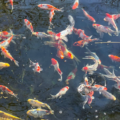
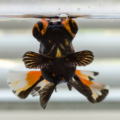
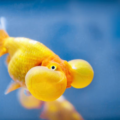
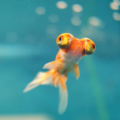
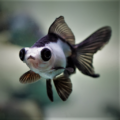
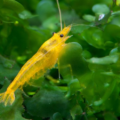
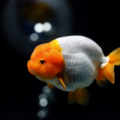

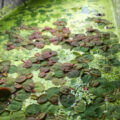
1 thought on “The Elegant Veiltail Goldfish: A Comprehensive Guide ”